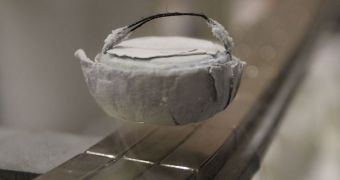For many years, physicists have known that superconductors are some of the most promising materials in the world today. They are basically various chemicals that, under the right conditions, can conduct electrical current without meeting any resistance. A flow of electricity could theoretically endure forever inside such a material, but the thing about it is that the effect can only be obtained when the element is cooled to extremely low, or heated to very high, temperatures.
In a new experiment, a team of investigators has determined that in a very specific set of superconductivity-prone materials, tiny areas of weak superconductivity hold up at higher temperatures when surrounded by regions of strong superconductivity. This was accurately demonstrated in a copper-based superconductor, and details of the work appear in the latest issue of the respected scientific journal Physical Review Letters. The work is also highlighted in a Viewpoint, published in the current edition of the publication Physics. In charge of the team that conducted the tests was Harvard University expert Jenny Hoffman.
The team also included Japanese experts from the Central Research Institute of Electric Power Industry, scientists from Princeton University, and researchers from the US Department of Energy's (DOE) Brookhaven National Laboratory (BNL). The study built up on previous work, which showed that variations in superconducting and normal currents appeared even between adjacent layers of material, jumping back and forth. What the group did was use an imaging technique known as scanning tunneling microscopy (SEM) to determine how this effect appears at the nanoscale, inside copper-based ceramic superconductors.
What puzzled them the most was the fact that the desirable effect appeared to die out in the material at different temperatures, even if the areas surveyed were only micrometers (billionths of a meter) apart from one another. The team therefore concluded that the superconductivity effect also depended on the physical processes taking place in its immediate surroundings, and not only on the properties of the material itself. Using this new knowledge, physicists hope to soon be able to produce materials that remain superconducting at higher overall temperatures than currently possible.

 14 DAY TRIAL //
14 DAY TRIAL //